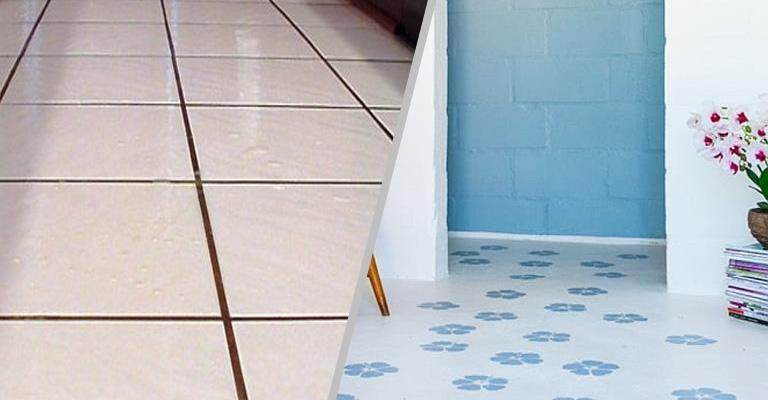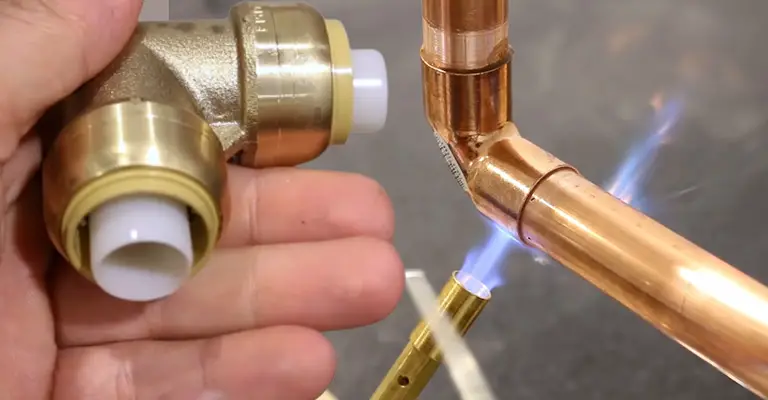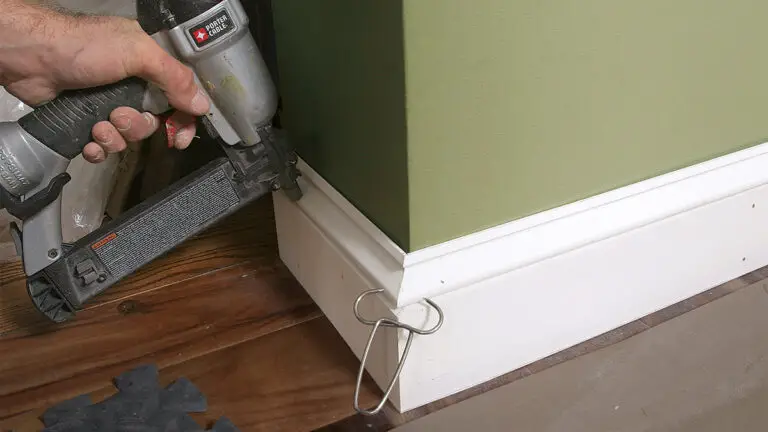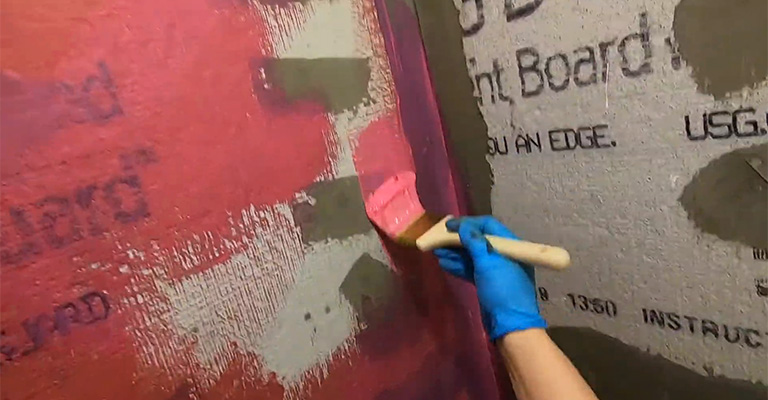Is It OK To Caulk Over Grout?
In places where water is often present, such as a shower or bathtub, caulking is used to seal the joint between materials. Cement-based grout is used to fill gaps between tiles, stones, or glass panels.
It’s better to use caulk when joining materials on different planes rather than grout. A caulked area can, however, become exposed to water damage when it dries out and shrinks.
Thus, it shouldn’t be used in large installations such as bathtubs. It is preferable to use grout in these situations.
Is It Ok To Caulk Over Grout?
If you have tiled surfaces in your home, you may have noticed that the grout between the tiles can crack, crumble, or discolor over time.
This can make your tiles look unsightly and create gaps where water and dirt can seep in. You may be tempted to cover up the damaged grout with caulk, but is this a good idea?
What is Caulk?
Caulk is a flexible material that can seal joints and gaps between different surfaces. It is often used around sinks, bathtubs, showers, windows, and doors to prevent water leakage and air infiltration.
Caulk comes in different colors and types, such as silicone, acrylic, latex, and polyurethane.
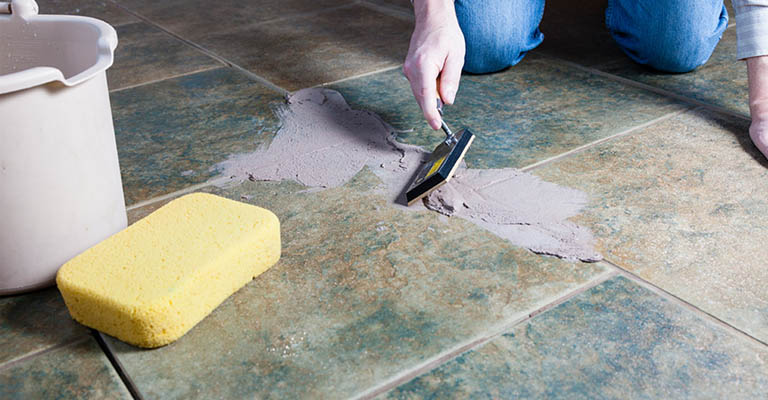
What is Grout?
Grout is a mixture of cement, sand, and water that fills the spaces between tiles.
It is usually applied with a grout float and then wiped off with a damp sponge. Grout helps to bond the tiles together and prevent them from shifting.
Grout also comes in different colors and types, such as sanded, unsanded, epoxy, and urethane.
Differences Between Caulk and Grout
The main difference between caulk and grout is that caulk is flexible and grout is rigid.
This means that caulk can accommodate movement and expansion of the surfaces it joins, while grout can crack or break if there is any movement or stress.
Therefore, caulk is more suitable for areas that are exposed to moisture or temperature changes, such as around tubs and showers. Grout is more suitable for areas that are stable and dry, such as floors and walls.
So, is it ok to caulk over grout?
The answer depends on the situation and the condition of the grout.
In general, it is not recommended to caulk over grout because it can create a breeding ground for mold and mildew.
The caulk can trap moisture behind it and prevent the grout from drying properly. This can lead to deterioration of both the caulk and the grout over time.
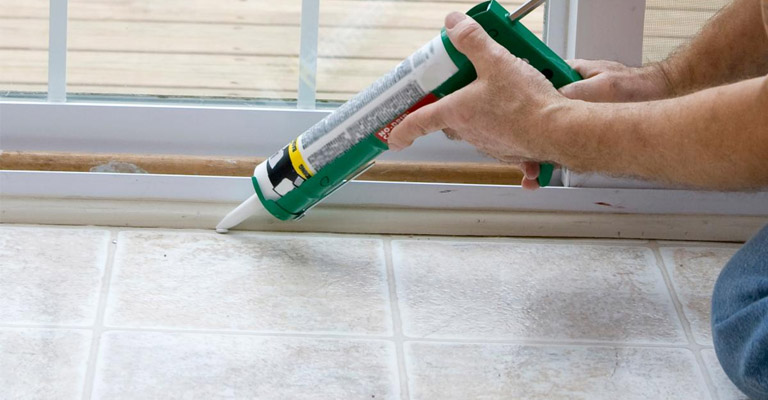
The Exceptions
However, there are some cases where caulking over grout may be acceptable or even necessary. For example:
- If the grout is severely cracked or missing in some areas, you may need to caulk over it to prevent water damage and leakage. However, you should only do this as a temporary solution until you can replace or repair the grout properly.
- If the grout is stained or discolored beyond repair, you may want to caulk over it to improve the appearance of your tiles. However, you should make sure that the caulk matches the color of the grout as closely as possible and that you apply it neatly and evenly.
- If the grout is in an area that requires flexibility, such as where the tile meets another surface or where there is a change in plane or angle, you may need to caulk over it to allow for movement and expansion. However, you should use a caulk that is specifically designed for this purpose, such as silicone or polyurethane.
In conclusion, caulking over grout is not a good idea in most cases because it can cause more problems than it solves. However, there are some exceptions where caulking over grout may be acceptable or necessary. If you decide to caulk over grout, you should do it carefully and correctly to avoid damaging your tiles or creating health hazards. Alternatively, you can hire a professional tile contractor to do the job for you.
Can You Caulk Over Sealed Grout?
Caulks and grout generally don’t get along. These layers have different textures, which may lead to their separation, or their whole project could be ruined. Clean the grout with bleach before caulking to prevent these problems. Make sure the caulk blends in with the wall.
There’s a huge difference between whether something can be done, and whether it should be done. Hence, before we consider caulking over the grout, let’s first find out if it makes sense or not.
Why Is It A Bad Idea To Caulk Over Grout?
I’m sorry to be a downer, but I’d discourage caulking over sealed grout. The reasons for this are several, so let’s examine them together.
- Mold Growth Can Result From Caulking Over Grout
It would be easy for things to smell funky as well, even if they didn’t look funky. The space between your bathroom’s layers of caulk and grout is suitable for moisture accumulation.
A damp and dark environment is ideal for mold growth and bacteria to thrive. If this is the case, your walls may slowly lose their color as a result of an offending odor.
- Separation Between The Caulk And The Grout Is Possible
Applying two materials with different textures on top of one another will cause them to separate. Furthermore, this is not only unattractive, but also fails to accomplish the goal of filling the gap between the tiles and the wall.
- Grout And Caulk Have Different Textures
Caulk and grout are very different, as the latter has a rubbery texture, and the former has a more solid one. Caulk will not be able to seal grout cracks or damage due to this.
The two materials also set in differently, so it can look weird. Caulk may be eye-catching if used over sealed grout over a large and visible surface. This is not a good thing!
How To Caulk
Be sure that all the existing grout is removed with a grout saw before you caulk; it will take care of any dirt left behind. If you decide to wash the grout thoroughly, make sure that you vacuum any remaining dirt before caulking.
Caulk can then be applied and smoothed out using a caulk gun’s tip, a spoon’s back or your finger. You should do a thorough cleaning and bleaching of existing grout before caulking it over. This will prevent any bacteria from being trapped behind the caulk and causing mold or rot.
Once the caulk is applied, use a caulk gun to back spray the caulk along the existing grout lines while applying tension to the caulk gun’s trigger and moving slowly backwards across the grout. The caulk needs to be smoothed out before being pushed deeper into the joint to ensure a stronger connection.
Repairing Cracks With Caulk
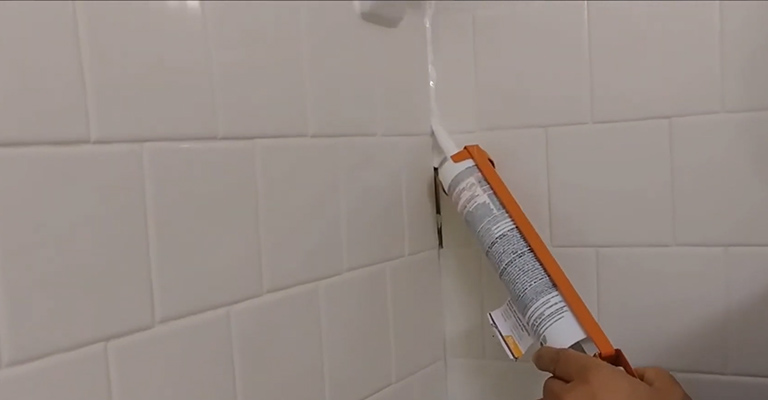
Grout is most commonly damaged by cracking. Grout on tiles begins to weaken as you walk, eventually showing unsightly cracks as a result. Using caulk, you can fill in these cracks and restore the grout’s appearance.
To begin, use a grout saw or Dremel tool to remove all loose and cracked grout. Smooth the caulk down gently with a plastic spoon after you apply it to the cracks. Caulk can also be smoothed by hand by wetting your fingers.
Be sure you wait a minimum of 48 hours for the caulk to cure completely before walking on the floors. Heavy furniture should not be put back in place until it has fully cured. It is possible to purchase caulk in a number of colors and some types are made in a variety of types. The caulk should closely match the color of the grout.
Why Should You Use Caulk in Shower Corners?
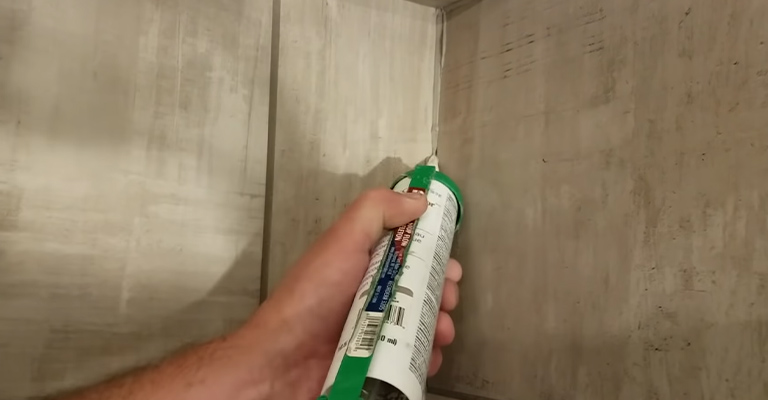
When caulking shower corners, make sure to use caulk, not grout. In corners, grout cracks and comes apart easily. The walls are affected by temperature changes since the tiles on the walls relative to each other expand and contract.
This causes cracks in the corners because the grout cannot flex to match the changes. Sealing shower corners with silicone caulk ensures a waterproof seal and prevents cracks.
It generally isn’t a good idea to caulk over grout rather you can replace grout with caulk. Additionally, caulk may be a poor choice for sealing or connecting two materials not only from an aesthetic perspective, but also from a practical standpoint.
Final Words
Tile grout plays an essential role in the longevity and appearance of any tile installation. When considering whether to caulk over existing grout, it’s crucial to weigh the pros and cons. Caulking over old grout might provide a temporary solution, especially in areas like caulk shower corners. However, the ideal approach would be to utilize a grout removal blade and extract the old, compromised grout. This process ensures a clean surface for either sanded grout or unsanded grout, depending on your tile type and gap size.
Additionally, for wet areas like shower tiles, using a specialized acrylic caulk ensures better water resistance and adherence to tile surfaces. While it might be tempting to simply grab a caulk tube and layer it over the old grout for a quick fix, proper grout removal and application of the right type of grout caulk yields more durable and aesthetically pleasing results. It’s always paramount to prioritize the health of your tile installations over short-term solutions. By understanding when to use caulk and when to commit to full grout removal, homeowners can ensure their tile surfaces remain pristine, functional, and attractive for years to come.

